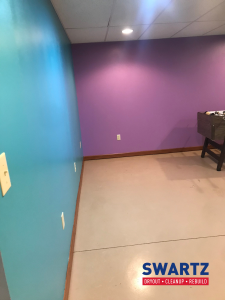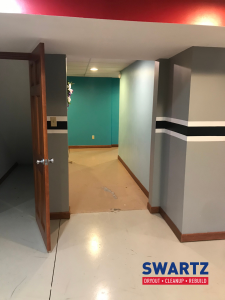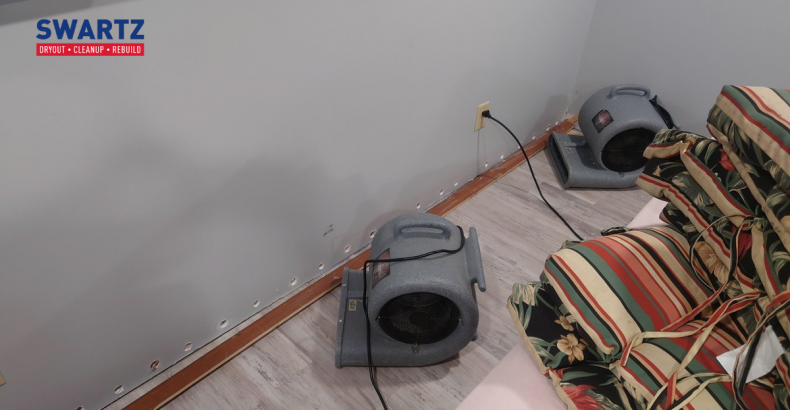
Water in a Local Basement
Earlier this spring, we were called to one house because the sump pump malfunctioned, flooding their basement. The flooring in the basement was mostly painted concrete, which meant easier to cleanup.
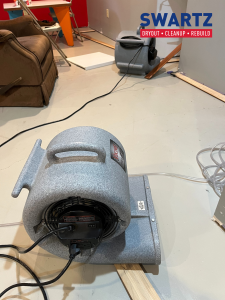
The backed up water did saturate the bottom of the drywall in each of the rooms, and the baseboard began to swell because of it too.
Because the owners discovered it quickly, they were able to get the sump pump working properly to remove the excess water. They called us right away, and we were able to bring our drying equipment to dryout the whole basement.
We brought in our commercial-grade air movers, better known as fans. We used our snout fans to centralize the moving air on the bottoms and corners of the walls. We removed the baseboard throughout the entire basement for a few reasons. It allowed the baseboard to dry out, instead of continuing to swell while nailed to the wall, which could have caused more damage to the wall.
The other reason was so that we could drill holes in the bottom of the wall directly behind where the baseboard would be able to cover it up when we were finished. The snout fans were positioned to blow directly into those holes to allow air flow behind the drywall.
There are times we have to cut and remove 18″-24″ of the wall because the water was discovered after a day or two. Mold growth can begin to spread on both sides of the wall, which can lead to health hazards for those living in that home.
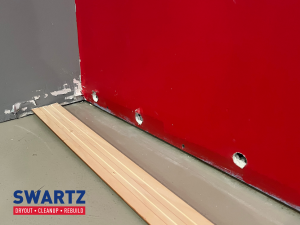
Thankfully, we did not have to cut out any of the walls in this home.
We brought in a few industrial dehumidifiers to pull the water out of the air. The hoses were directed to the sump pump’s pit to remove the water from the basement. With how many pieces of equipment we needed to use for this job, we also brought in one of our power boxes. It connects directly to the home owner’s breaker box, giving power to our equipment. We can connect up to four or five fans this way, ensuring we do not overload individual breakers when plugging into the wall outlets.
As the dehumidifiers removed the water from the air, lowering the humidity, the fans blew the dry air onto the base of the walls, which allowed the walls to dry out.
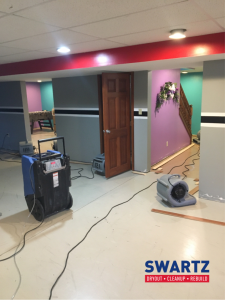
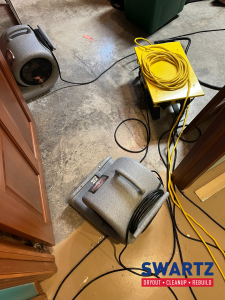
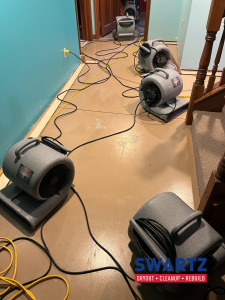
Water always moves to the driest materials around it, so when the bottom of the walls began to dry, the water began to move down, which then was dried out by the fans. It takes the whole set of equipment to achieve the proper moisture level readings in the home.
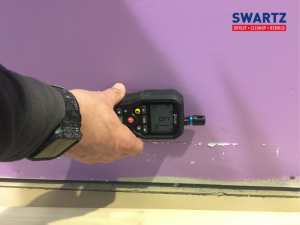
Our team will not remove the equipment until everything is completely dry, and they took pictures of the meters to prove that.
Once everything was dried out, they pulled the equipment from the home and began to reattach the baseboard throughout the whole basement. From start to finish, this project spanned 9 days to complete the dryout process.
